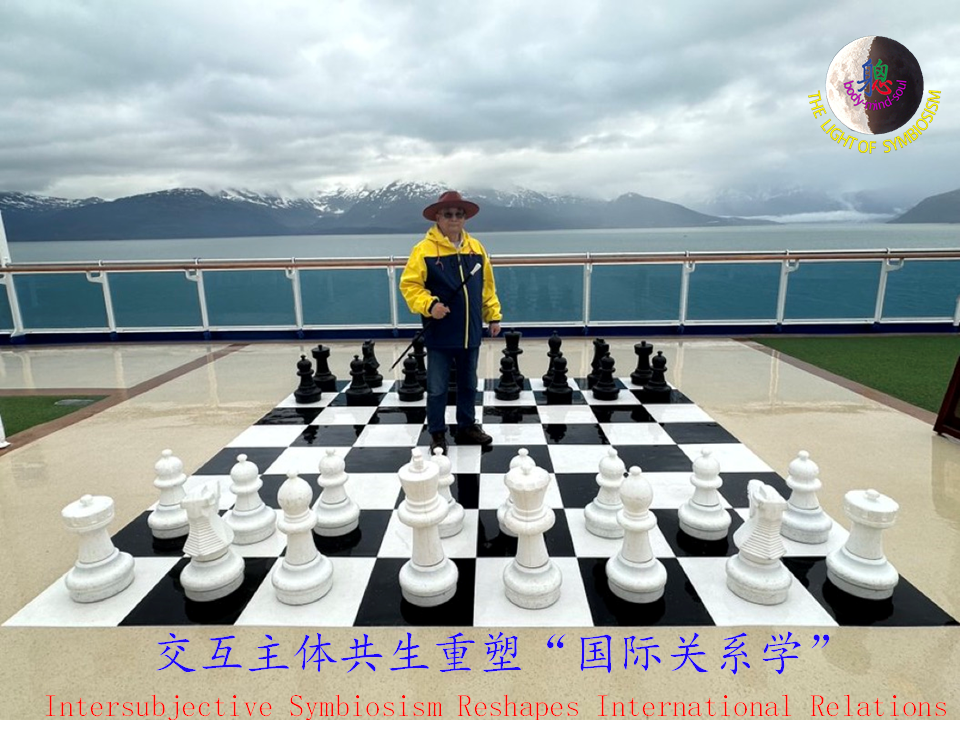稀土不是熊猫:供应链国家垄断——“害人终害己”的互害机制
稀土不是熊猫:供应链国家垄断——“害人终害己”的互害机制
Archer Hong Qian(钱宏)
2025年10月 · Vancouver
Rare Earths Are Not Pandas: Supply-Chain State Monopoly
—The “Mutual Harm Mechanism” That Ultimately Hurts Itself
By Archer Hong Qian
October 2025 · Vancouver
一、稀土≠熊猫
I. Rare Earths ≠ Pandas
稀土与熊猫,虽然都属于自然资源,但其性质与国际法律属性截然不同。熊猫(Ailuropoda melanoleuca)作为中国的国家象征,其“出借”与“合作繁育”后代的归属权具有主权属性?;而稀土则是一种遍布全球的自然矿产资源,并不具有唯一性。
Although both rare earths and pandas are natural resources, their legal and symbolic attributes differ completely. The giant panda (Ailuropoda melanoleuca) is China’s national treasure, and the offspring of pandas lent abroad remain under Chinese sovereign ownership?. Rare earths, by contrast, are globally distributed minerals without exclusivity.
事实上,根据美国地质调查局(USGS)数据,全球可开采稀土储量前十的国家包括中国、越南、巴西、俄罗斯、印度、澳大利亚、美国等?。稀土的“稀缺性”更多体现在经济与技术层面,而非地质意义的稀有。中国在上世纪80年代通过收购美国稀土公司(如Molycorp)逐步掌握了分离提炼技术,但这些工艺本身并不具有垄断性,也不具备永久技术壁垒。
According to the U.S. Geological Survey (USGS), the top ten countries with exploitable rare earth reserves include China, Vietnam, Brazil, Russia, India, Australia, and the United States?. The “rarity” of rare earths lies more in economics and processing capability than in geology. China gained refining know-how in the 1980s after acquiring U.S. firms such as Molycorp, but those techniques were never permanently exclusive.
二、中国稀土垄断的“三大优势”
II. China’s “Triple Advantages” in the Rare-Earth Monopoly
中国稀土产业在全球市场取得主导地位的根本原因,并非技术领先,而是基于国家资本主义的体制性扭曲与非对称竞争优势。其核心为“三大优势”:
China’s dominance in the global rare-earth market stems not from technological leadership but from state-capitalist structural distortions that produced three asymmetric advantages:
低人权优势 —— 劳动力成本长期被压制,安全保障与职业健康条件薄弱;
低商权优势 —— 民营与外资企业在资源领域缺乏真正的市场话语权,政策导向与行政干预导致市场化不足;
敢污染优势 —— 环境治理标准宽松,污染外部性被社会化而非企业化承担。
Low human-rights advantage – labor costs are depressed, and workplace safety remains weak;
Low business-rights advantage – private and foreign companies lack autonomy under state intervention;
Pollution-tolerance advantage – lax environmental regulation externalizes pollution costs to society.
加之出口退税、信贷倾斜、土地补贴等政策性扶持,这一组合在短期内确实带来了供应链成本优势。然而,从结构性角度看,这是一种以牺牲人权、商权与环境为代价的“短期比较优势”,与长期创新、可持续发展相冲突,缺乏共生经济的内生健康机制?。
Combined with export rebates, credit support, and land subsidies, this configuration created short-term cost advantages. Yet structurally, it represents a short-term comparative advantage achieved at the expense of human, commercial, and environmental rights—contradicting sustainable innovation and lacking the endogenous health of Symbionomic balance?.
三、61号、62号文件的“长臂陷阱”
III. The “Long-Arm Trap” of Circulars No. 61 and No. 62
2025年中国商务部发布的《第61号 公布对境外相关稀土物项实施出口管制的决定》及《第62号出口许可证管理办法》试图以“国家安全”为由对稀土技术与产品实施出口限制。然而其条款设计本身存在高度的不确定性与行政随意性。
In 2025, China’s Ministry of Commerce issued Circulars No. 61 and No. 62, invoking “national security” to control the export of rare-earth materials and technologies. However, the design of these measures reveals high administrative arbitrariness and low operability.
界定模糊:文件规定“含有、集成或混有原产于中国稀土技术价值比例达到0.1%以上”的产品须申请许可;然而,0.1%如何界定?谁来鉴定?如何计价?
审批不明:所谓“逐案审批”,并无明确时限与救济途径;
权力过伸:禁令涵盖“军事潜力提升”“14纳米及以下逻辑芯片研发”等,几乎覆盖全球高科技领域。
Ambiguous definition – Products “containing or integrating 0.1% or more of Chinese-origin rare-earth technology” require export permits; yet no metric, certifier, or valuation method is specified.
Opaque approval – “Case-by-case review” provides no deadlines or appeal procedures.
Overreach – Prohibitions extend to “military enhancement” and “14-nm chip R&D,” encompassing nearly all advanced manufacturing.
这不仅违反了中国加入WTO时作出的“不得设限”承诺?,而且与2014年中国在WTO稀土案中败诉后撤销出口配额的先例相矛盾?。换言之,这一政策重启旧路径,等于**“自毁国际信誉”**。
This move not only violates China’s WTO accession commitment to avoid export restrictions? but also contradicts the 2014 WTO ruling? that forced China to remove its previous quotas—thus undermining its own international credibility.
四、互害机制的显现
IV. The Emergence of the “Mutual Harm Mechanism”
短期看,稀土出口管制似乎能形成“贸易筹码”;但从结构上看,它是一个典型的互害机制(Mutual Harm Mechanism):
At first glance, rare-earth export control may appear to create trade leverage. Structurally, however, it manifests a Mutual Harm Mechanism—a self-destructive feedback loop:
该政策将直接刺激美国、澳大利亚、加拿大、印度、日本等国重启稀土开采与提炼投资。例如,美国国防部2025年已宣布持股19%的洛杉矶稀土加工企业,预计2028年年产重稀土1万吨;
其他国家将加速研发替代材料与工艺,包括无稀土电机技术、回收提炼技术与替代磁性材料;
一旦全球技术门槛被突破,中国将从“稀土支配者”转为“稀土过剩者”,陷入类似钢铁、煤炭产业的“产能陷阱”。
It directly motivates the U.S., Australia, Canada, India, and Japan to restart rare-earth extraction and refining; the U.S. Department of Defense already holds 19% of a Los Angeles refinery expected to produce 10,000 tons annually by 2028.
It accelerates international R&D in rare-earth-free motors, recycling, and substitute magnetic materials.
Once global technical thresholds are surpassed, China shifts from “dominant supplier” to “overcapacity victim,” as seen in steel and coal.
结果是:害人终害己。中国的“稀土武器论”不仅失去国际道义,更会加速他国脱钩,使自身成为供应链孤岛。
The result: harm to others turns into self-harm. The so-called “rare-earth weapon” narrative loses moral legitimacy, speeds up global decoupling, and leaves China isolated in supply chains.
五、生态转向:无稀土新生态
V. The Ecological Turn: A Rare-Earth-Free Future
特斯拉首席执行官埃隆·马斯克在2023年宣布,特斯拉将研发“无稀土电机”以实现电动机生态的彻底重塑?。这一突破预示稀土的“战略地位”正被技术革命快速消解。
In 2023, Tesla CEO Elon Musk announced the development of “rare-earth-free motors”?, signaling that the strategic value of rare earths is rapidly dissolving under technological evolution.
稀土的真正替代,不仅是材料层面的替代,更是文明结构的转向:从稀缺性竞争逻辑转向共生性平衡逻辑。在共生经济学(Symbionomics)框架下,真正的竞争力来自生态的健康循环与技术的伦理共生,而非垄断、封锁与报复。
The true replacement of rare earths lies not merely in materials science but in a civilizational shift—from a logic of scarcity and rivalry to a logic of symbiotic balance. Within the framework of Symbionomics, genuine competitiveness arises from ethical co-evolution between ecology and technology, not from monopoly, coercion, or retaliation.
六、结语
VI. Conclusion
“稀土不是熊猫。”熊猫象征文化与生命的共享,而稀土若被滥用于权力工具化与垄断化,只会成为互害机制的导火索。一个文明的成熟,不在于资源的控制力,而在于能否以智慧与爱——即**“Amorsophia”**——实现自我约束与生态共荣。
“Rare earths are not pandas.” Pandas embody shared life and cultural goodwill; rare-earth coercion, by contrast, triggers mutual destruction. The maturity of civilization lies not in control over resources but in the capacity for self-restraint and symbiotic flourishing through wisdom and love—Amorsophia.
注释 / Notes
《濒危野生动植物种国际贸易公约》(CITES)第三附录,明确国宝动物的跨国合作繁育主权归属。
?CITES Appendix III defines sovereign ownership in cross-border breeding cooperation.U.S. Geological Survey, Mineral Commodity Summaries 2024: Rare Earths.
钱宏,《共生经济学》(Symbionomics),2023。
WTO, Accession of the People’s Republic of China, 2001, Art. 11.3.
WTO Dispute DS431: China — Measures Related to the Exportation of Rare Earths, Tungsten and Molybdenum, 2014.
Tesla Investor Day 2023, “Permanent Magnet-Free Motor Announcement.”
钱宏,《特斯拉无稀土电机技术的生态重塑与哲学-经济学启示》,共生网:http://symbiosism.com.cn/10940.html
